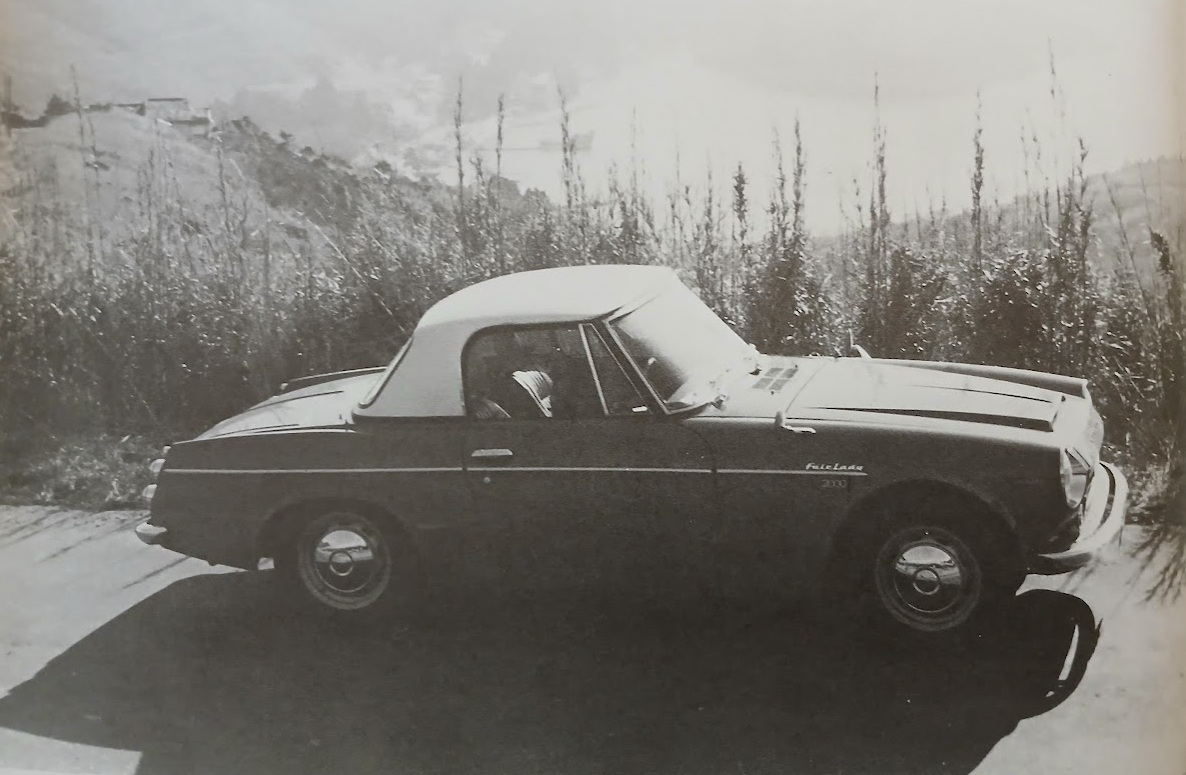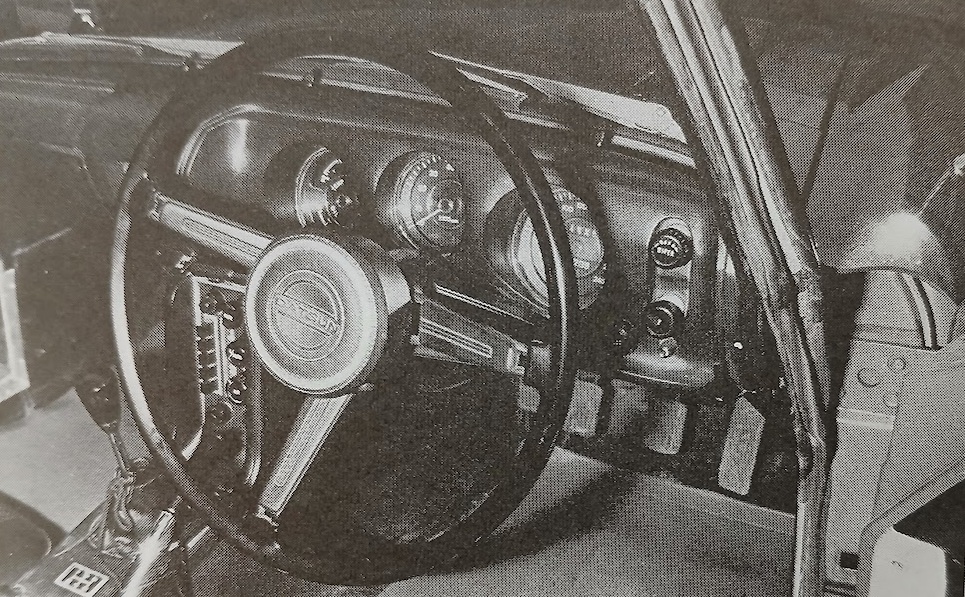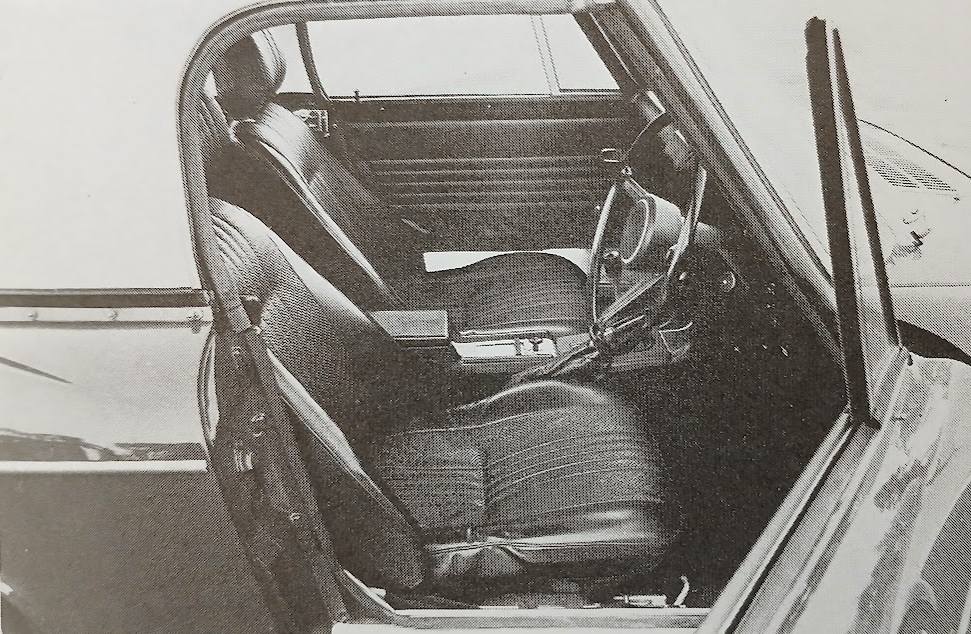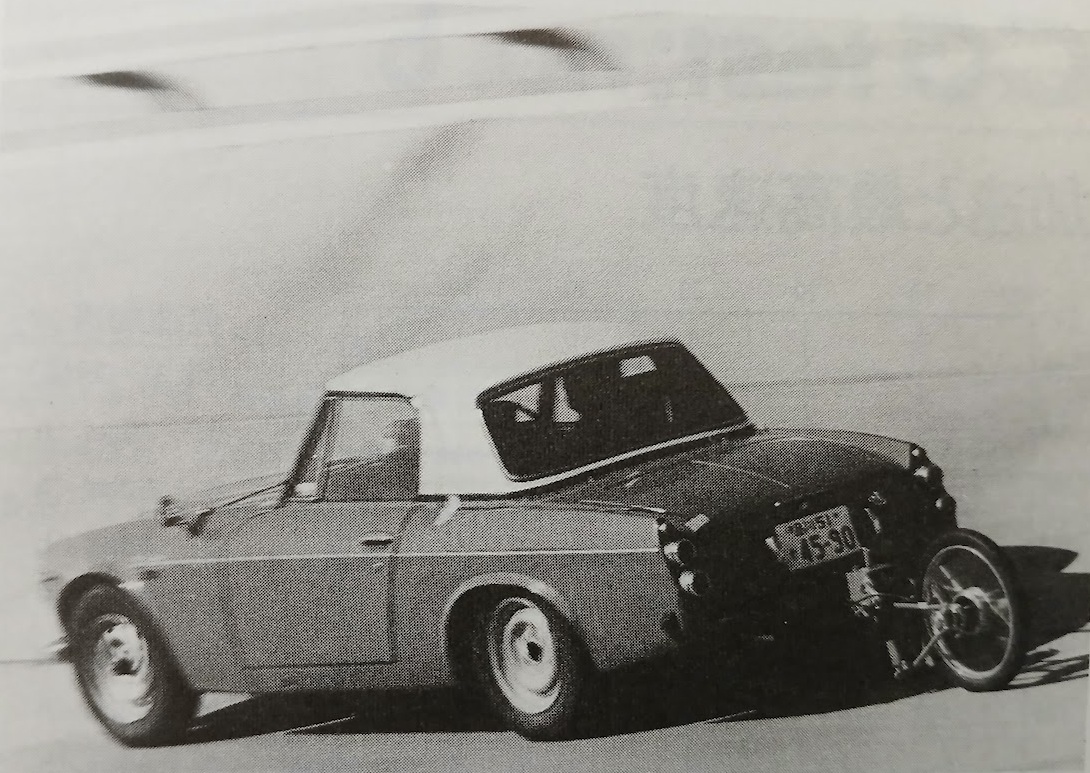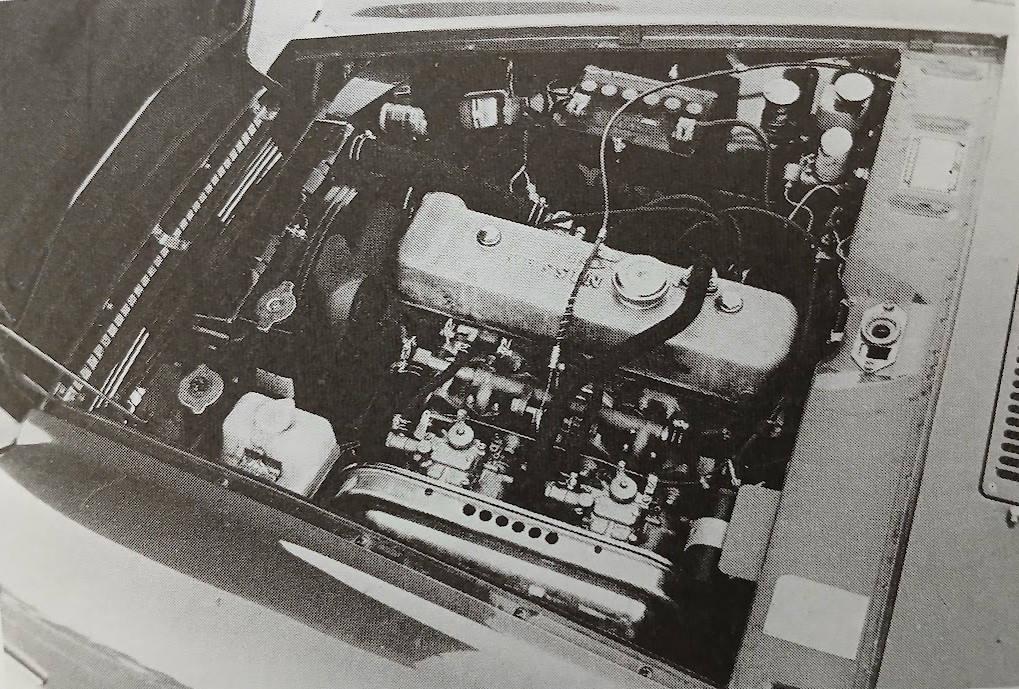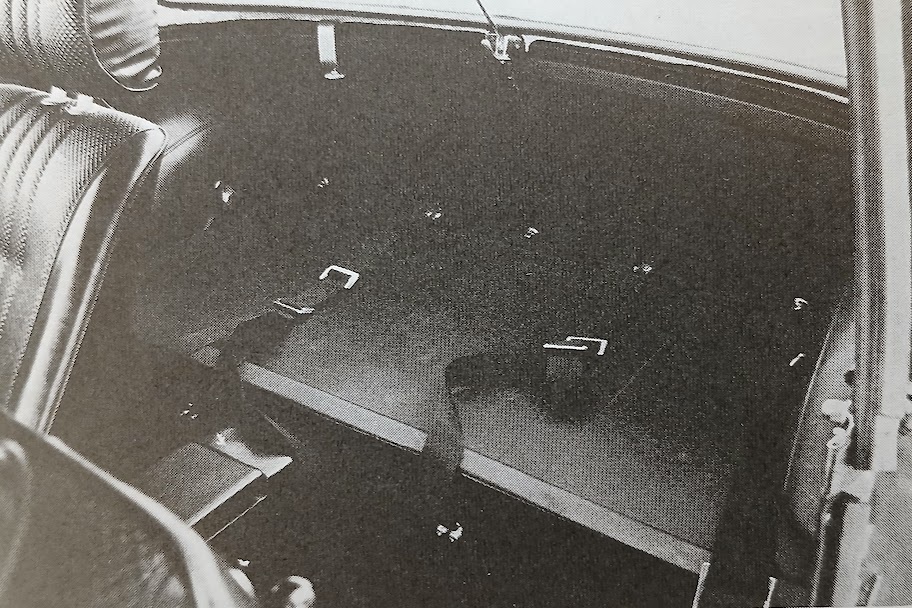Datsun Fairlady 2000 (1969)
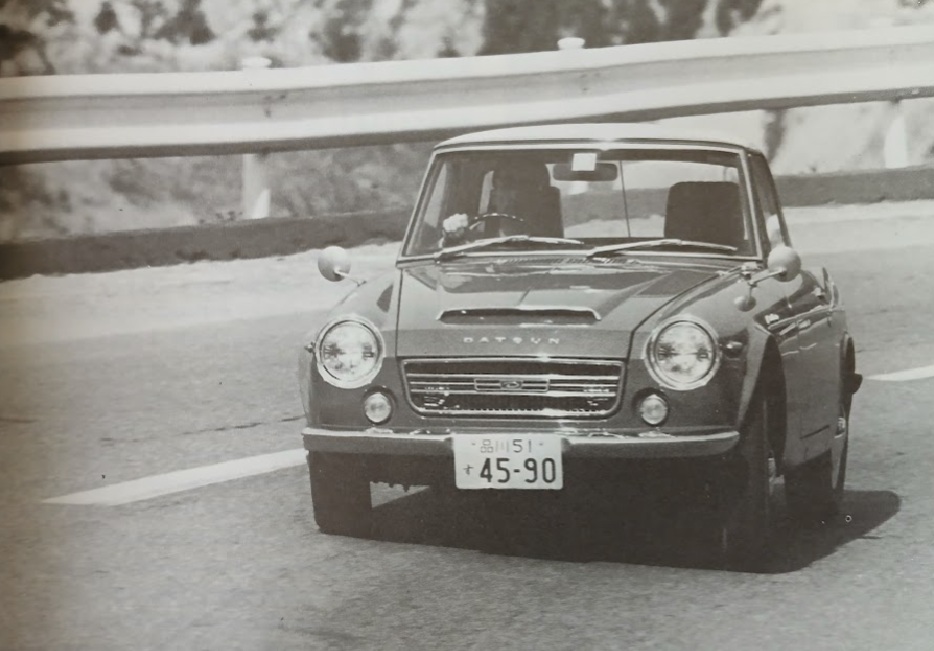
Publication: Car Graphic
Format: Road Test
Date: April 1969
Author: “C/G Test Group” (uncredited)
Summary: Classic two-seater sports car, brutal and dynamic, four-cylinder 2-liter engine, powerful but rough, 5-speed gearbox, strong brakes but requires hard pedal force, extremely maneuverable but requires good road surface, weather-resistant hardtop, very noisy and extremely hard ride.
Road testing the Fairlady 2000
In this 1970s society, where men are becoming increasingly feminized and “sports cars” are no longer sports cars, the Datsun Fairlady is becoming a truly rare creation. From a technical standpoint, it is “old-fashioned” and “classic” in every respect. The Fairlady appeared in 1961, but its design, which is clearly represented by its separate ladder frame and rigid rear axle, belongs to the same generation as the Triumph TR2/3 and MGA of the 1950s. Of course, through the constant development process, the Fairlady has come to have outstanding power performance and appropriate maneuverability for a 2-liter sports car today, but in order to achieve this, “luxuries” such as a comfortable ride and interior have been completely rejected. It is a sports car for sports that does not tolerate compromise.
The Fairlady we tested this time, over a distance of about 800km, was a 2000 with a hardtop (the OHV 90ps 1600 is no longer in production). Since the majority of Fairlady owners purchase the hardtop separately, a model with just the hardtop is now available on the market (priced at 910,000 yen; if you add the soft top later, it costs 42,000 yen). This was the car we tested. It was practically a new car with about 3,000km on the odometer, and was completely stock except for the Dunlop SP3 radial tires.
Our first impression of the Fairlady was that it was like a single-piston-engine airplane from World War I. One day during the test drive, we also drove a Mazda Cosmo Sport, which was like a jet plane. However, these two cars with completely opposite characteristics have almost no difference in performance figures. The Fairlady’s top speed, according to the catalog, is 205km/h, the Cosmo’s is 200km/h, and their 0-400m acceleration times are 15.4 and 15.8 seconds, respectively. However, the Cosmo has the smoothness and gentle hum of an electric motor, which is a bit of a problem. By contrast, the more masculine Fairlady delivers its sharp and powerful performance with the vibration and noise of a single-engine propeller plane.
The completely untuned 2.0-liter 145ps engine, straight off the production line, is a large (per cylinder) four-cylinder sports unit, and it idles quite roughly. By modern standards, the engine mounts seem quite rigid, and like a vintage car, the engine vibrations are transmitted directly to the separate chassis and then to the body. The mixture of the two twin-choke Solex 40PHH carburetors was quite rich in the test car (the generally poor fuel economy also supports this), and even on cold early mornings, it always started on the first try if you floored the throttle a few times before turning the starter. This Solex does not use a butterfly-type choke, but rather a type that blows in raw gas directly, so if you use it too much from the start, there is a risk of fouling the spark plugs (we fouled them once during a cold start in the morning). The plugs were ordinary NGK B6E. Once fouled, they can only be fixed by driving at a constant speed of about 3000rpm for a while.
For fast idling, there is a separate hand throttle on the dashboard, which is very convenient for warming up the engine. The water temperature in the test car was slow to rise, and if we started driving without warming it up sufficiently, the water temperature did not rise above the lower limit of the normal range, and it only reached 80°C when we encountered a traffic jam.
This engine has a considerable amount of high-speed torque, 18.0kgm/4800rpm, and the power comes on suddenly at around 4000rpm. The rev counter has a yellow zome from 6500-7000rpm and a red zone from 7000-8000rpm. However, because of the ample torque, even in low gear, the normal range in the city is around 1500 to 4000rpm. The Fairlady 2000 comes standard with a 5-speed gearbox, and the fifth gear is an overdrive with a ratio of 0.852. If you release the clutch gently, it engages smoothly just like a passenger car. The final gear ratio is 3.89, and with the Fairlady’s large 14-inch wheels and tires, the gearing is quite tall for a 2-liter engine. Even in low gear, the gear ratio is 2.957, so when starting normally from a traffic light, response is surprisingly lackluster. The ride is so stiff that you jump in your seat if you hit a manhole cover, so if a person with a normal mentality takes a quick drive around town, this car will undoubtedly give the impression of being crude and unapproachable. However, after driving it every day for about a week, as well as testing out the car’s top speed at Yatabe and fully experiencing its cornering abilities on a quiet weekday at Hakone, our conclusion is quite different.
Its dynamic performance is among the best in the world for a low-priced 2-liter sports car. As mentioned above, the test car was a new car with a mileage of about 3,000km, and although the engine did not seem to be fully broken in, the top speed was 190km/h in either fourth or fifth gear, and the 0-400m time was recorded at 15.8 seconds with two aboard. Although the engine starts off slow and rough, it becomes relatively smooth once it exceeds 3500rpm, the lower limit of its powerful rev range, and it can easily rev up to 7500rpm in low gear. General vibration and noise are always excessive by any standard. The main sources of noise are the engine and transmission, with wind noise added at high speeds. Engine noise has a single resonance peak at around 2800rpm, where the exhaust sound booms so loudly in the small cabin that you have to speak loudly to be understood. The legal top speed of 100km/h on the highway corresponds to about 3000rpm in fifth gear, which is unfortunately close to the peak of the exhaust boom, so the noise level is not much different than 100km/h in fourth gear (about 3400rpm), even with an overdrive fifth.
The fully synchronized 5-speed gearbox is one of the Fairlady’s strong points. The Porsche-type servo synchro is extremely effective, with light and reliable shifts and short throws. The gear ratios are very close, at 2.957 (first), 1.858 (second), 1.311 (third), 1.000 (fourth), and 0.852 (fifth), which matches well with the engine’s relatively narrow power band. When pushed up to 6500rpm, where the yellow zone begins, the speed reaches about 105km/h in second gear and about 147km/h in third gear, and the top speed of 190km/h is reached at 6500rpm in fourth (the speedometer indicates 200km/h). Even in fifth gear the test car only reached 190km/h, failing to reach the 205km/h listed in the catalog. As you can see, the main purpose of fifth gear is not absolute speed, but to reduce the burden on the engine by lowering the engine speed during high-speed cruising, thereby reducing fuel consumption, and it can be said that the design intent is achieved (the speed per 1000rpm is 29.0km/h in fourth gear and 34.5km/h in fifth gear).
When the test car reached a speed of 180km/h, the drivetrain vibrated considerably in both fourth and fifth gears, and the whole body shook violently. Since it did not stop even when the car was in neutral, this was not related to the engine, and since the steering wheel did not vibrate, it was not the front wheels. Therefore, it was almost certain that the problem was an imbalance in the propeller shaft or the rear wheels. Also, when approaching 6500rpm in fourth gear, the gearlever vibrated violently, to the point that the knob would come loose no matter now many times we tightened it. Most foreign sports cars have rubber locking screws on the knobs to prevent this.
The relatively peaky torque characteristics and tall gearing are also reflected in the overtaking acceleration times. Starting with this test, we changed the way we measure overtaking acceleration, and decided to express it in terms of the time it takes to accelerate by 40km/h from different speeds, such as 20-60km/h and 40-80km/h. For example, in third gear, the Fairlady’s time from 40-80km/h is 7.6 seconds, while the time from 80-120km/h is 6.8 seconds, 0.8 seconds faster. Usually, in sports cars, the opposite is true. For example, the Skyline 2000GT’s 40-80km/h time in third gear is 7.6 seconds, while the 80-120km/h time is 8.5 seconds. The times for the Corona Mark II 1900 SL are 7.5 seconds and 9.1 seconds, respectively, and the times for the Familia Rotary Coupe (we would prefer Cosmo data, but C/G has not yet completed full-scale testing) are 9.4 seconds and 12.4 seconds. Furthermore, even in fourth gear, the Fairlady was faster at high speeds, recording times of 11.2 seconds for 40-80km/h and 10.1 seconds for 80-120km/h.
On the other hand, due to the large absolute torque of the engine, the higher gears can be used at surprisingly low speeds, and the lower limit of practical speed for fifth gear is 50km/h (about 1500rpm). Since fifth gear offers almost the same power as the direct-drive fourth gear of a typical 2-liter practical car, you can use fifth even in the city.
As mentioned before, if you gently release the clutch, it will engage like a passenger car, but if you raise the rotation speed to about 5000rpm and drop the clutch for an acceleration run, it will engage quickly like a racing car, leaving behind two black tire marks about 5m long, making it easy to make a clean start. Also, the rear axle is held down well by the torque rod, so power is effectively transmitted to the road even during such sudden starts.
Fuel economy varies greatly depending on driving style, but if you drive this car as intended, it will consume a fair amount of gasoline. In our experience, the worst case was just under 5km/l when driving only in the city, and the best was 10.5km/l when cruising at a constant 100km/h on the highway. In terms of practical fuel economy, if you drive half in the city and half on national highways, it is about 6.5-7km/l, which is about the same as the old Prince Skyline 2000GT-B. The 43-liter fuel tank is a little too small for this fuel consumption.
The brakes are very good, with Dunlop Sumitomo Mark II discs at the front and Alfin drums at the rear. There are no servos (or rather, there probably isn’t any space for them), so the pedal pressure is generally heavy. Even to decelerate to a stop at a traffic light (about 0.4g), you need nearly 30kg of pedal pressure, and to achieve the maximum braking force of nearly 1g, you need a strong 50kg foot. However, the braking force is proportional to the pressure, and the distribution between the front and rear wheels is ideal. It feels as if a giant invisible hand is grabbing you, and the pedal stroke is not too long, and there is no squealing.
Starting with this test, we have slightly changed the method of fade testing to a 0-100-0 test. Previously, we observed the change in pedal pressure by braking at 0.5g from 100km/h ten times in succession at 1km intervals. Now, as the name “0-100-0” suggests, we accelerate at full throttle and brake at 0.5g when we reach 100km/h, then start again immediately after stopping, and brake again when we reach 100km/h, and repeat the process ten times. With this method, the more acceleration the car has, the shorter the time between braking is compared to a slower car, making it a more severe test of the brakes. Since faster cars have more opportunities to over-use the brakes, we think this method is reasonable. Incidentally, the Fairlady’s initial resistance was 30kg, and by the tenth stop it was only 48kg. Since there were no signs of fading in terms of effectiveness, its fade resistance was deemed to be satisfactory.
The steering is 2.4 turns from lock to lock, and considering the small turning radius of 4.9m, it should be said that it is quite sharp. Even when turning a street corner, it is not necessary to make a full turn of the wheel. The steering force is a little heavy at parking speeds, but it becomes unexpectedly light once you start moving (the test car’s tires were Dunlop SP3s, and the tire pressure was 2.0kg/2.0kg). At town speeds, the steering feels surprisingly sluggish, but the response improves with speed and it becomes quite accurate.
The Fairlady 2000 is nose-heavy (55.3%/44.7% even with two people on board), so naturally there is fairly strong understeer, and it is maintained up to the limit. On the winding roads with good surfaces around Hakone, the Fairlady showed its best side. For example, on the way up Otome Pass, we enjoyed a spectacular hill climb by maintaining 5000-6000rpm in second and third gear. There was very little roll, the grip of the Dunlop SP3s was good, and the car was always predictable. The cornering posture is stable, the balance is basically strong understeer, and the steering force is heavy. However, in tight corners, if you step on the throttle in second gear, you can easily perform a neat, small power slide, and since the steering is moderately fast, it is easy to control. The slide occurs gradually and is not sudden, to even beginners can easily predict it. In short, the Fairlady is basically safe and intuitive to handle.
As mentioned before, the ride is extremely hard. The suspension stroke is extremely short, and even the slightest bump will jolt you around in your seat. Therefore, driving for a few hours on poorly paved streets in the city is tiring. The seats are very thin, but they are probably the most comfortable of Nissan’s products. The driving position is, in a word, “vintage.” The steering wheel is close to your chest and positioned high, so it is almost inevitable to bend your elbows to use the steering wheel. The cockpit is narrow, and feels crowded with two large men on board. As for legroom, if you push the seat all the way back, there is plenty for tall drivers, and the controls are generally appropriately positioned. The pedal position is particularly good, allowing heel-and-toeing to be done very naturally. There is a firm footrest for the left foot, which helps with bracing in corners. A grab handle for the passenger would be nice.
As mentioned above, this car was equipped with an FRP hardtop as standard. It was much more weatherproof than the convertible top type, and if anything, had more headroom than necessary. However, there was a large blind spot in the rear quarter (the convertible top has a large triangular window in this area), and the view through the rearview mirror was narrow due to the fixed headrests. In the test car, the fit between the hardtop and the body was poor, and it made a terrible noise on uneven roads.
The Fairlady meets all US safety standards (except for emissions, on the domestic model) since the minor change in November 1967. One of the major improvements was the wipers, which were changed from the previous cross type to a parallel type, and the blade length was extended by about 80mm, greatly expanding the forward view in rainy weather. At the same time, the heater capacity was strengthened, and it was now possible to switch between fresh outside air and interior recirculation.
The Fairlady is a pure two-seater, nothing more, but there is a truly spacious luggage area behind the seats, and two large suitcases can be placed there. Although it is very simple, it is equipped with a cloth band to secure luggage. In addition to the glove box on the dash, there is a locker between the seats that can hold a camera, and both doors have map pockets. There is an ashtray behind the gear lever. It has a sliding lid, so non-smokers will find it useful as a coin tray. The dashboard is completely covered with a matte black crash pad, and all the switches are flat and have a safe shape. There is a warning light on the console to notify the driver of brake fluid leakage, which is rare for a Japanese car, and there is also a switch to check if the bulb of this warning light is burned out. All the instruments are located high in the dash, making them easy to see day and night.
As we have said many times before, the Fairlady is not a modern grand touring car. It is a traditional (and probably one of the last) open two-seater sports car. It has many inconveniences when viewed as multi-purpose transportation, but for drivers who can drive a sports car like a sports car, it will give deep pleasure that exceeds its price.
Postscript: Story Photos
